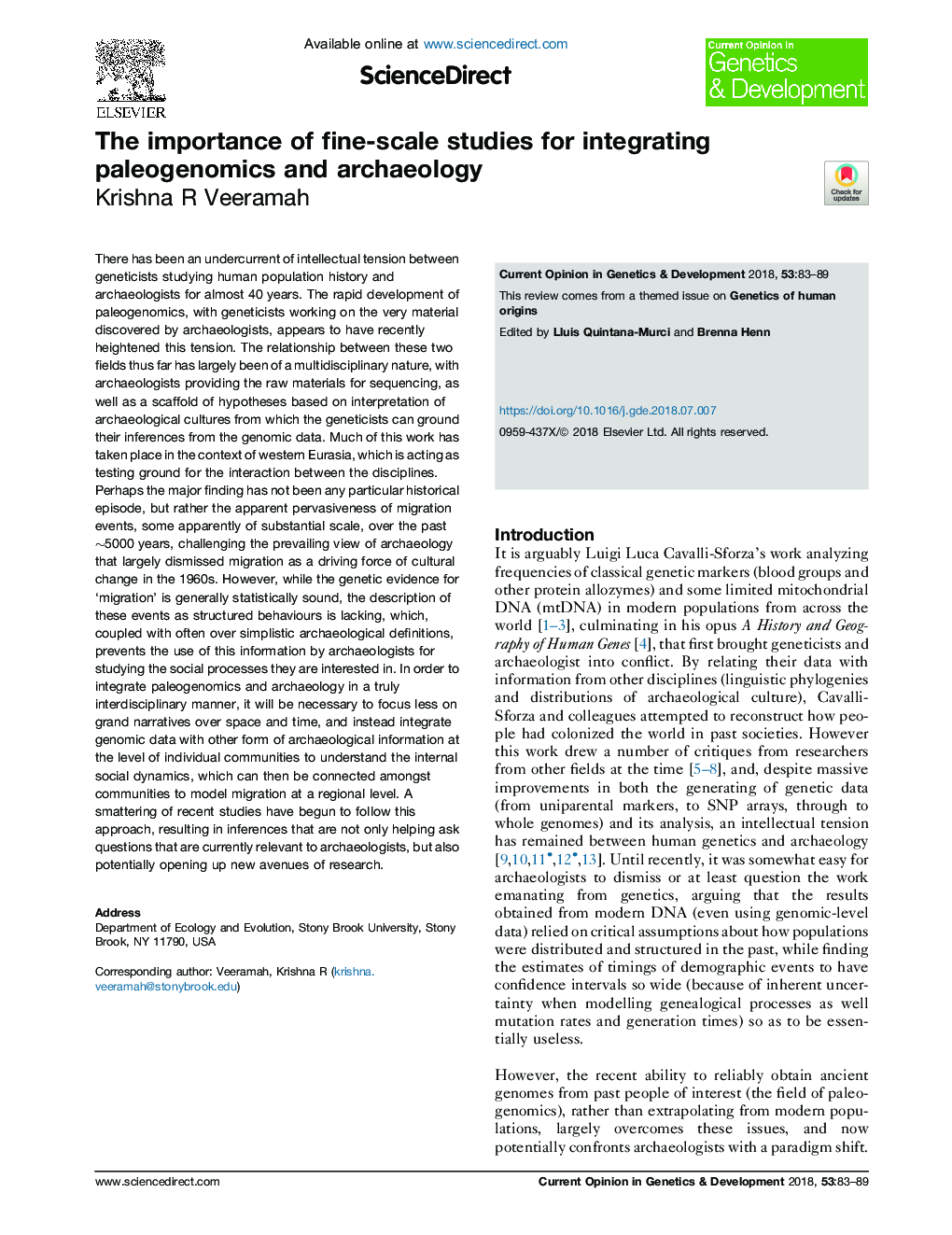| کد مقاله | کد نشریه | سال انتشار | مقاله انگلیسی | نسخه تمام متن |
|---|---|---|---|---|
| 8625632 | 1568226 | 2018 | 7 صفحه PDF | دانلود رایگان |
عنوان انگلیسی مقاله ISI
The importance of fine-scale studies for integrating paleogenomics and archaeology
ترجمه فارسی عنوان
اهمیت مطالعات دقیق برای ادغام پالئوزومنیک و باستان شناسی
دانلود مقاله + سفارش ترجمه
دانلود مقاله ISI انگلیسی
رایگان برای ایرانیان
موضوعات مرتبط
علوم زیستی و بیوفناوری
بیوشیمی، ژنتیک و زیست شناسی مولکولی
زیست شناسی تکاملی
چکیده انگلیسی
There has been an undercurrent of intellectual tension between geneticists studying human population history and archaeologists for almost 40 years. The rapid development of paleogenomics, with geneticists working on the very material discovered by archaeologists, appears to have recently heightened this tension. The relationship between these two fields thus far has largely been of a multidisciplinary nature, with archaeologists providing the raw materials for sequencing, as well as a scaffold of hypotheses based on interpretation of archaeological cultures from which the geneticists can ground their inferences from the genomic data. Much of this work has taken place in the context of western Eurasia, which is acting as testing ground for the interaction between the disciplines. Perhaps the major finding has not been any particular historical episode, but rather the apparent pervasiveness of migration events, some apparently of substantial scale, over the past â¼5000 years, challenging the prevailing view of archaeology that largely dismissed migration as a driving force of cultural change in the 1960s. However, while the genetic evidence for `migration' is generally statistically sound, the description of these events as structured behaviours is lacking, which, coupled with often over simplistic archaeological definitions, prevents the use of this information by archaeologists for studying the social processes they are interested in. In order to integrate paleogenomics and archaeology in a truly interdisciplinary manner, it will be necessary to focus less on grand narratives over space and time, and instead integrate genomic data with other form of archaeological information at the level of individual communities to understand the internal social dynamics, which can then be connected amongst communities to model migration at a regional level. A smattering of recent studies have begun to follow this approach, resulting in inferences that are not only helping ask questions that are currently relevant to archaeologists, but also potentially opening up new avenues of research.
ناشر
Database: Elsevier - ScienceDirect (ساینس دایرکت)
Journal: Current Opinion in Genetics & Development - Volume 53, December 2018, Pages 83-89
Journal: Current Opinion in Genetics & Development - Volume 53, December 2018, Pages 83-89
نویسندگان
Krishna R Veeramah,
